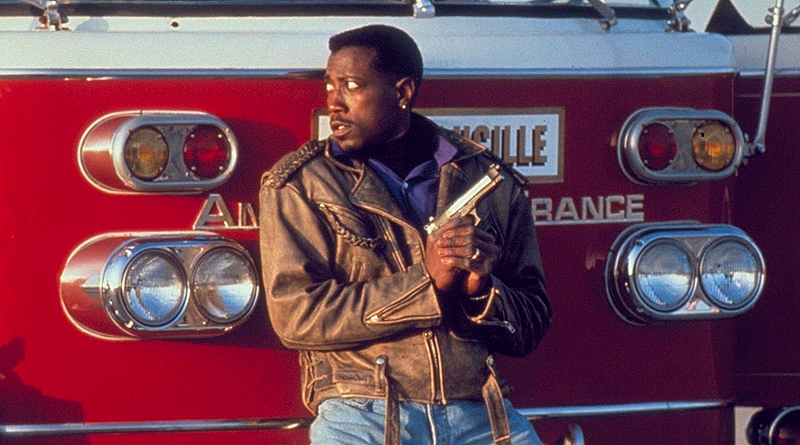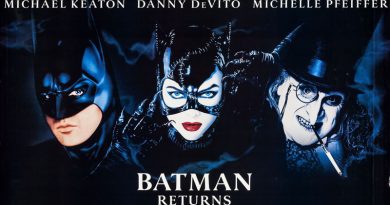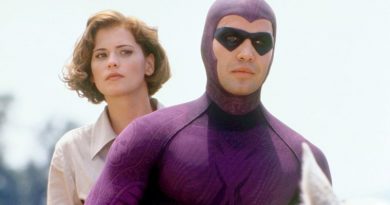Passenger 57 at 30: The Movie That Made Wesley Snipes a ’90s Action Icon
The 1990s era saw a significant influx of Die Hard-like formula in many mainstream action genres. The formula in question typically involved a hero (a cop, for instance) trapped in a single location, where he has to take down the terrorists and save the day. One of the recurring locations that have been a favourite subject among many filmmakers is planes or better known as “Die Hard on a plane”. Similarly-themed movies like Executive Decision (1996), Con Air (1997) and Air Force One (1997) dominated the aforementioned subgenre with varying degrees of success.
Then, there’s another one called Passenger 57 starring Wesley Snipes as John Cutter, an airline security expert who happens to be on Flight 163. It was the same flight that transports Charles Rane (Bruce Payne), a most-wanted international terrorist who was arrested earlier by the FBI in Miami. The plan is to bring Rane back to Los Angeles, where he will stand trial for previous terrorist attacks. Of course, things don’t go as planned after Rane already has people on board (among them includes Elizabeth Hurley in her first Hollywood role as a stewardess-in-disguise, Sabrina Ritchie) subsequently taking over the plane mid-flight.
Passenger 57 has everything the movie needs to make its Die Hard-like formula work in its favour: a charismatic hero, a solid antagonist, memorable one-liners (“Always bet on black!”) and some well-staged action set pieces. Wesley Snipes excels in his no-nonsense performance as John Cutter, even though Passenger 57 turns out to be his first action-hero role. And yet, it was a natural fit for him, given the fact he has the look as well as athletic build and skill (he was already an established martial artist who holds black belts in karate and Hapkido). His role also marked another breakthrough for Snipes as an action star after he already made a name for himself in earlier movies like Major League (1989), Mo’ Better Blues (1990) and New Jack City (1991).
No action movie of its kind would be complete without a worthy foe and here, we have Bruce Payne’s Charles Rane, whose cold and calculated mannerisms made him such a formidable villain. Payne may play several antagonist roles in his career that can be seen in other movies like Highlander: Endgame (2000) and Dungeons & Dragons (2000). But it was his role as Charles Rane that is forever etched in my memory even after 30 years since I watched Passenger 57.
The movie also benefits from a pacey length (it only runs a compact 84 minutes long!) that doesn’t waste its time getting down to business. The story may have been formulaic and I have to say it does suffer a few preposterous moments that require a huge suspension of disbelief (like how is it possible that Rane correctly predicts the FBI would arrive just in time while he undergoes plastic surgery?).
But it remains entertaining enough and it also helps that director Kevin Hooks knows well how to put together a technically accomplished action movie. And he actually managed to pull off such a feat within a limited US$15 million budget. The action sequences may lack the kind of huge set pieces seen in the likes of bigger-budgeted Con Air and Air Force One, where Passenger 57 is restricted to mostly hand-to-hand combats and gunfights. Still, it’s worth mentioning Snipes’ commitment to performing most of his own stunts including the final scene between him and Bruce Payne’s Charles Rane without stunt doubles. The soundtrack is one of the highlights of this movie as well, notably Stanley Clarke’s jazzy main title and Norman Brown and Stevie Wonder’s “Too High” — both of which can be respectively heard in the opening and closing credits.
Believe it or not, Passenger 57 wasn’t originally envisioned as what we saw back in 1992. Sure, the original script retains the premise of a passenger trapped in a plane hijacked by terrorists. However, the actor who was initially tapped to play the passenger was Clint Eastwood and the terrorists would be Iranian. The movie has since undergone rewrites and potential actors including Sylvester Stallone, Eddie Murphy and Denzel Washington were all considered at one point before Wesley Snipes finally secured the role and the rest, as they say, is history.
Celebrating its 30th anniversary this week, I can’t believe it was already that long since Passenger 57 was first released on November 6, 1992. It hit straight to the No. 1 with US$10.5 million after managing to knock the persistent holdover, Under Siege out of the top spot. Although Passenger 57 only lasts a week in the top spot (Dracula took over the following week), it did enough business collecting a respectable US$44 million at the US box office alone with a worldwide total of US$66.5 million.
The success of Passenger 57 helps skyrocketed Snipes’ career that granted him a string of high-profile films throughout the rest of the ’90s era such as Rising Sun (1993), Demolition Man (1993) and U.S. Marshals (1998), just to name a few. Kevin Hooks, on the other hand, would be forever remembered for his direction in Passenger 57, even though I have a certain soft spot for his little-seen 1996 action comedy called Fled starring Laurence Fishburne and Stephen Baldwin.




